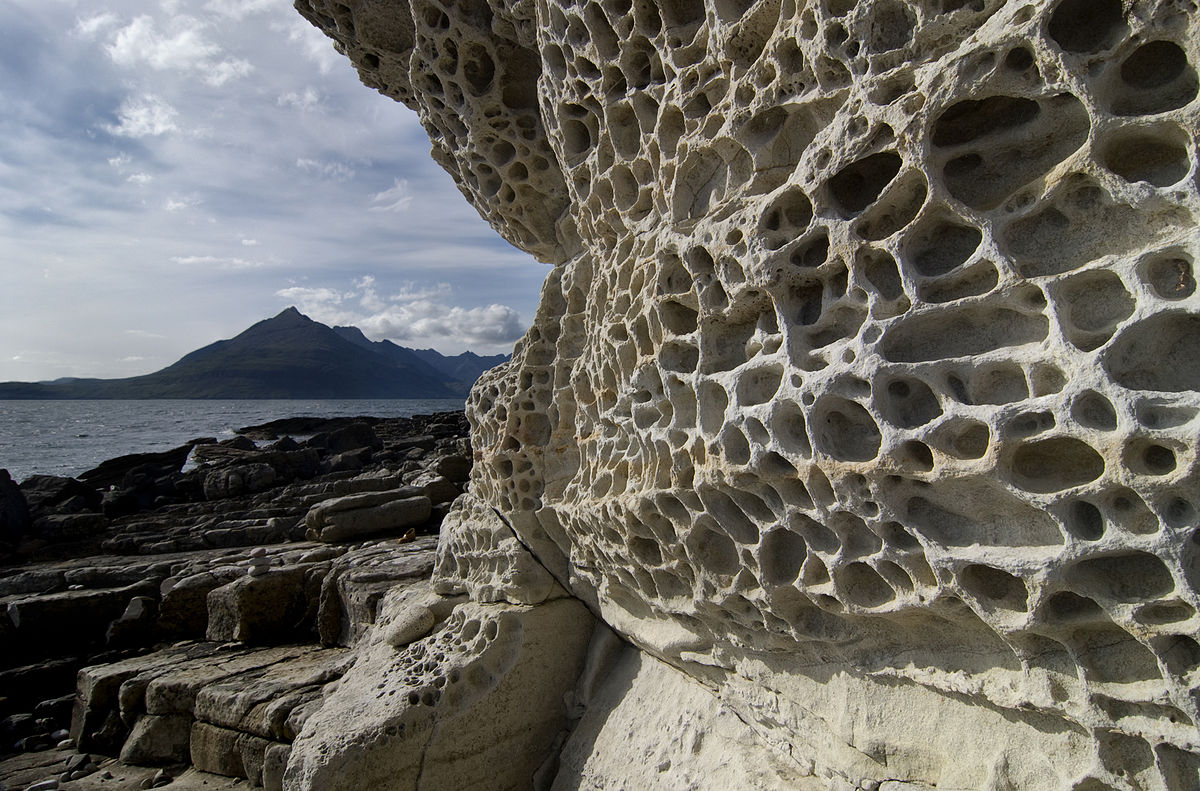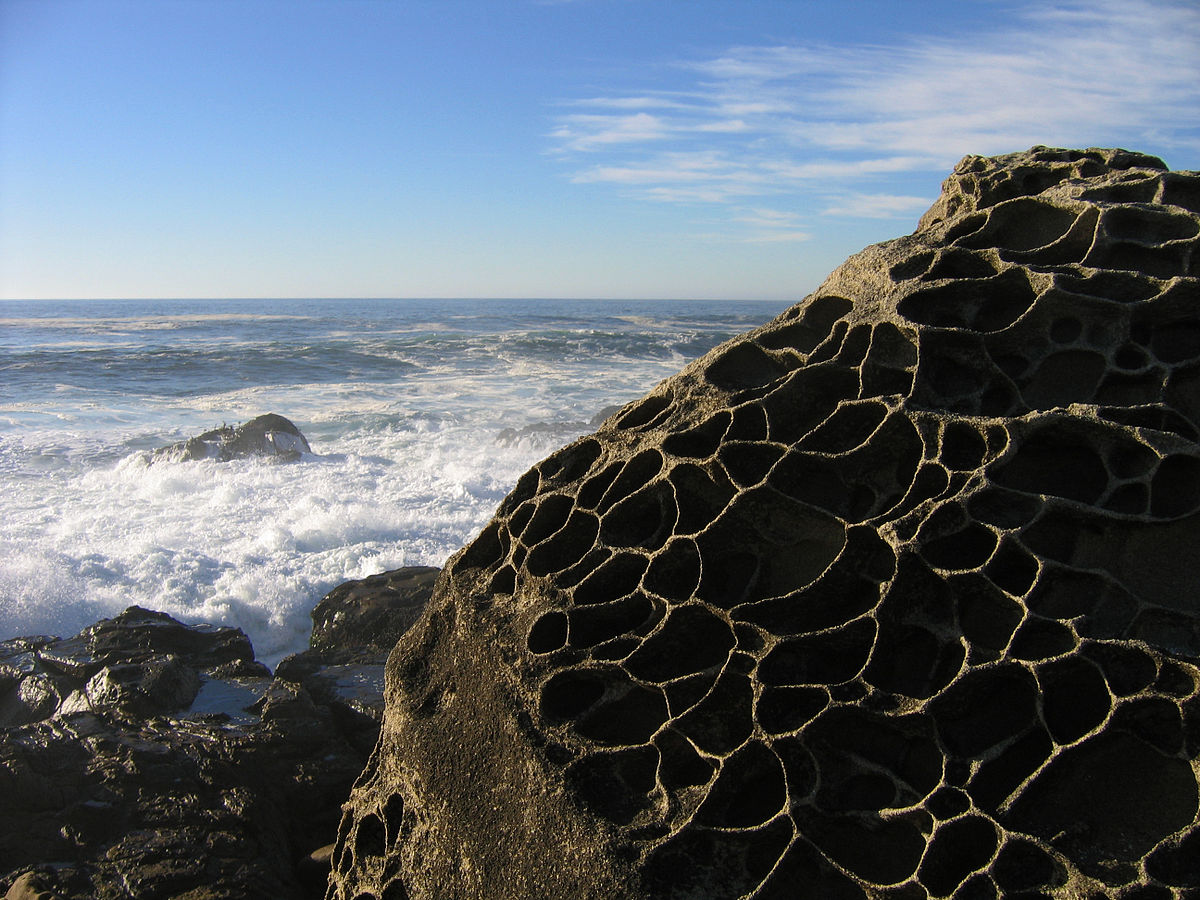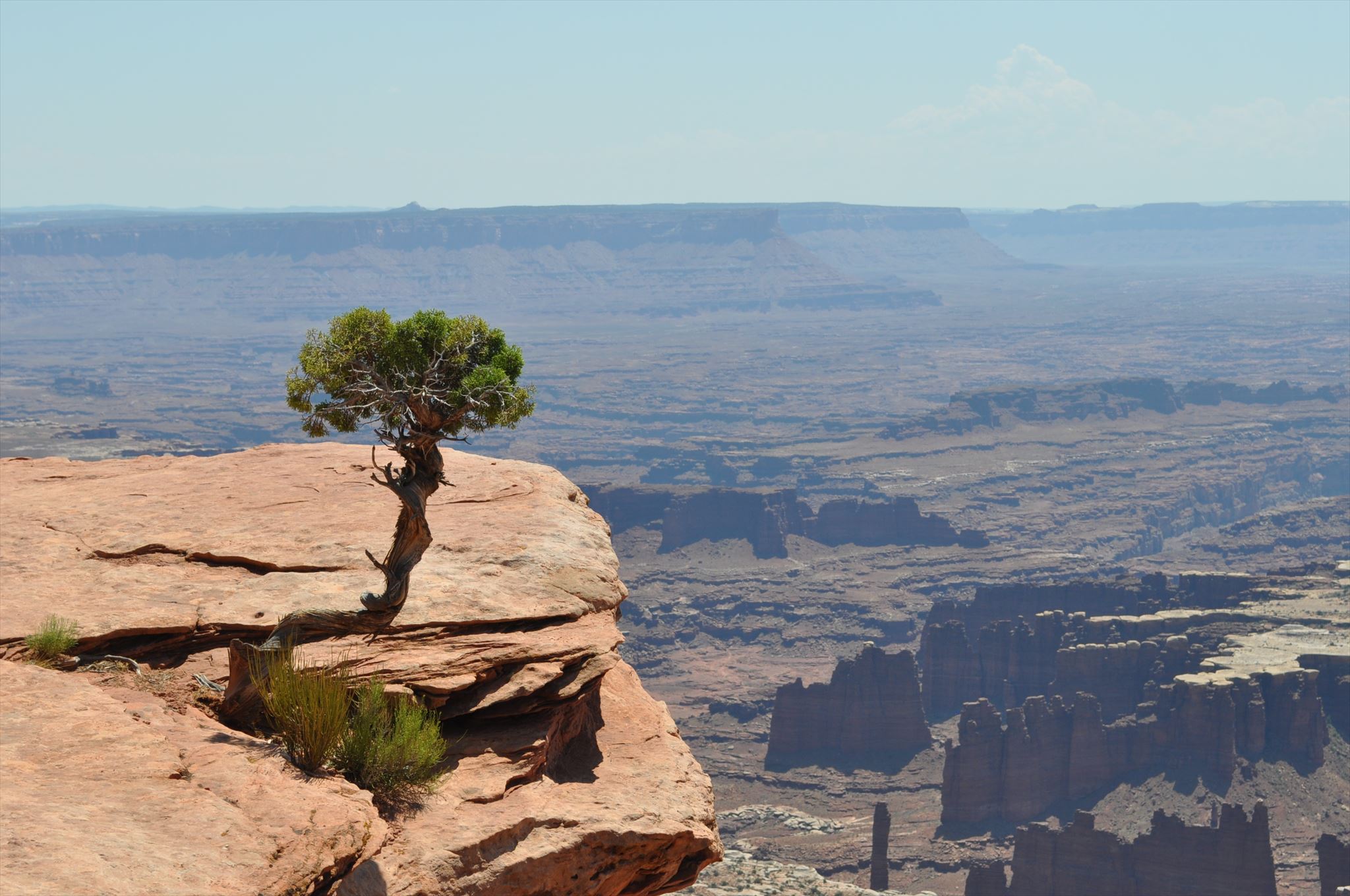Tafoni Weathering Patterns EarthCache
Tafoni Weathering Patterns
-
Difficulty:
-

-
Terrain:
-

Size:  (other)
(other)
Please note Use of geocaching.com services is subject to the terms and conditions
in our disclaimer.
This is an Earthcache. There is no physical container. Before logging this cache online, email your answers to me.
Please, do not climb in the Tafoni. Sand stone this thin easy breaks. Help preserve it for the next visitor to admire.
Notice there is an entrance fee at Canyonlands National Park and that visitors must comply with all park regulations. More information can be found at www.nps.gov/cany
At this position and about 30 meters onward along the path you will see some fantastic erosion patterns. You are looking for series of holes in the rock wall, from tiny pits to pea sized, fist size cavities, and even larger.
 Example of Tafoni at Elgol, Isle of Skye.
Example of Tafoni at Elgol, Isle of Skye.
Tafoni
Tafoni are small cave-like features found in granular rock such as sandstone. They are often connected, adjacent, or networked. They often occur in groups that can riddle a hillside, cliff, or other rock formation. They can be found in all climate types, but are most abundant in coastal areas and semi-arid and arid deserts. Sometimes smaller tafoni develop inside larger ones - nested tafoni. Tafoni have also been called fretting, stonelace, stone lattice, honeycomb weathering, and alveolar weathering.
 Example of Tafoni at Salt Point State Park, Sonoma County, California.
Example of Tafoni at Salt Point State Park, Sonoma County, California.
Weathering
Weathering defines the set of physical, chemical, and/or biological processes which decay and break rock down into smaller pieces.
So how are these particular unique features called tafoni created? There are many hypotheses, here are a few possibilities:
Salt: One possible explanation is a process called salt weathering, a type of physical weathering. The salt can arrive in a number of ways to the rock. It can be in the nearby soil, and rain or wind can deposit it on the surface of the rock. Sometimes the salt may originate in the rock itself.
However it gets there, once there it will eventually crystallize. If the rock already has some porosity, the salt will often fill the tiny and even microscopic holes near the surface of the rock. As the salt accumulates, the arrival of water will help catalyze the formation of salt crystals (which grow and expand), thus causes stress to the rock around the salt, thereby flaking off grains and pieces.
Water: When water arrives, whether in rainfall, floods, etc., it is absorbed by the rock. The presence of water can cause physical weathering through mineral swelling (especially if there is clay in the rock), which can weaken and break apart the rock particles, especially along the surface. Also, the water can be absorbed and then later freeze, which often happens in desert environments at night, as the temperatures drop dramatically. The formation of ice crystals (much like salt crystals) puts pressure and stress on the surrounding rock, which leads to flaking and breakup of the rock.
Water can also cause chemical weathering. Water can bring all sorts of different minerals along with it, which can chemically react with the stone and minerals therein. These processes can also weaken the rock, and lead to weathering, flaking, etc.
Biological Creatures such as snails, plants, fungus, etc. often secrete different chemicals and acids into the environment around them, which can weaken the rock. Other forces, such as water, wind, etc. can then more easily weaken and weather and erode the rock. The nearby lichen is a possible candidate, as are other organisms that may grow along the surface.
Other Factors: There are many possible candidates that could cause and develop these unique formations. One is cementation, which occurs when water laden with cementing agents like silica oxide, iron oxide (rust), and calcite coats the surface of a rock, thus causing weathering effects to be temporarily limited. Tafoni may then form when this hardened outer layer is breached revealing a core depleted in cement and especially susceptible to weathering, a process known as core softening.
Other factors including porosity, permeability, conductivity, feldspar concentration, bedding, jointing, fracturing, grain size, and grain sorting may also augment tafoni development. For example, if the rock is already porous, then any particles that fall or break off inside that cavity would be subject to wind, which would blow them around, further weathering away the inside of the cavity.
How did these particular tafoni form?
Go to the place the cache coordinates point to. Take a good look at the patterns and the rock they are in.
1. Describe the rock wall: What height over the path does the Tafoni start and what height does it end?
2. What is above it?
3. What sort of erosion? Water, wind, ... or something else? If you cannot tell me which one, maybe you can exclude some of them?
4. Do you think the erosion is still ongoing? Why/why not?
5. Can you find any nested tafoni?
6. Optional: Take a picture of your GPS and view and post it with your "Found it" log. You may also be in the photo. 
7. Send your answers to my profile at geocaching.com before logging online. You need not wait for my answer to log your find. I will contact you if there is a problem with your answers.
Important! Do not write the answers in the log or post photos of the rock wall.
 The view
The view
You have to have been at the location after the release date of this cache - old holiday visits do not count and are not accepted.
Please, do not climb in the Tafoni. Sand stone this thin easy breaks. Help preserve it for the next visitor to admire.
Additional Hints
(Decrypt)
[No physical container. *Before* logging this cache online, email your answers to me.
Please, do not climb in the Tafoni. Sand stone this thin easy breaks. Help preserve it for the next visitor to admire.]